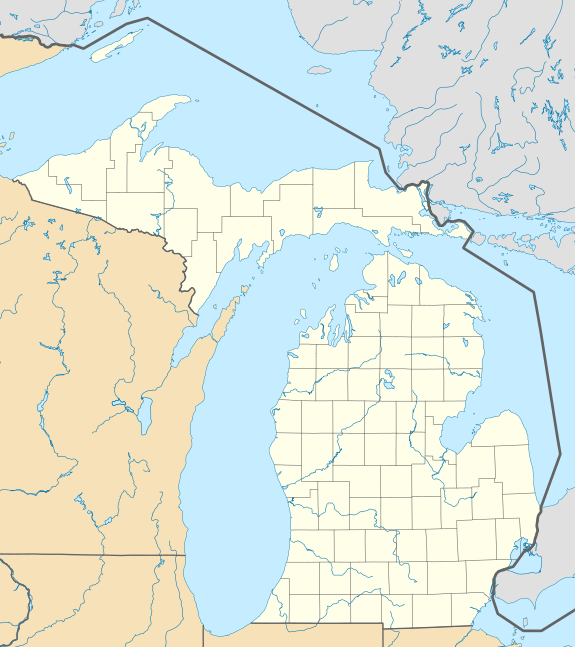Howell Opera House
| Howell Opera House | |
|---|---|
|
Howell Opera House in 1881 | |
| Location | Michigan |
| Coordinates | 42°36′26″N 83°55′49″W / 42.60722°N 83.93028°WCoordinates: 42°36′26″N 83°55′49″W / 42.60722°N 83.93028°W |
| Designated | February 11, 1972[1] |
| Reference no. | P23969 |
 Location of Howell Opera House in Michigan | |
The Howell Opera House is an opera house located in Howell, Michigan. The site is listed as historic by The Michigan State Historic Preservation Office.[2] It is also listed on The National Historic Register[3] as part of the Howell Downtown Historic District.
History
The Howell Opera House is a Victorian-style building with a seating capacity of 1,000 people.[4] Plans for the theater were drawn and executed by Detroit architect, Almon C. Varney at the cost of $10,000. Construction began in 1880 by Hunter and Holmes Contractors and doors were opened to patrons on December 30, 1881.[5] The building is located at 123 W. Grand River.
As the central part of the town, the edifice served not only for artistic performances but as a venue for several local occasions such as high school commencement. The theater also served, for a short duration, as home to the Livingston County Circuit Court in 1889.[4]
The Howell Opera House was first owned by the Stair Brothers, E.D. and Orin, who assumed ownership in 1884. The theater was later purchased by Arthur Garland in 1893 [5] who utilized a portion of the space to produce custom-tailored suits.
In 1923, the building was closed by the fire marshal.[4] This brought an end to its intended use as quarters for entertainment. For more than 70 years, The Howell Opera House served as storage for a local hardware store.
Renovation
In 2000, The Livingston Arts Council purchased The Howell Opera House [4] with plans to restore the patronage to function, once again, as a theater. Renovations began in 2001 with a slow start due to lack of funding. In 2007, the first installment of the development plan had been completed.[6]
Renovations were made solely to the first floor. These renovations include refinished flooring and walls as well as new stairways.[7] Plans have also been made for restoration of the second floor which houses the stage and balcony.
References
- ↑ "Michigan's Historic Sites Online". Michigan State Housing Development Authority. Retrieved March 23, 2013.
- ↑ State of Michigan. State Historic Preservation Office. Opera House. Michigan State Historic Preservation Office, 2010. Web. 9 Oct. 2011.
- ↑ United States. Dept. of the Interior. National Register of Historic Places. US Dept. of the Interior, 2010. Web. 9 Oct. 2011.
- 1 2 3 4 “The Opera House: Past and Present.” The Opera House. Livingston Arts Council, 2010. Web. 21 Sept. 2011
- 1 2 Gray, D.J. “The Opera House.” The Howell Bicentennial History. Michigan: Howell, 1975. 178-84. Print.
- ↑ “Livingston Arts Council: Howell Opera House.” Christman. The Christman Company, 2007. Web. 5 Oct. 2011.
- ↑ Behnan, Christopher. “Restoration, Popularity of Opera House Still Growing.” Daily Press and Argus. Daily Press and Argus, 2 Sept. 2011. Web. 11 Oct. 2011.
